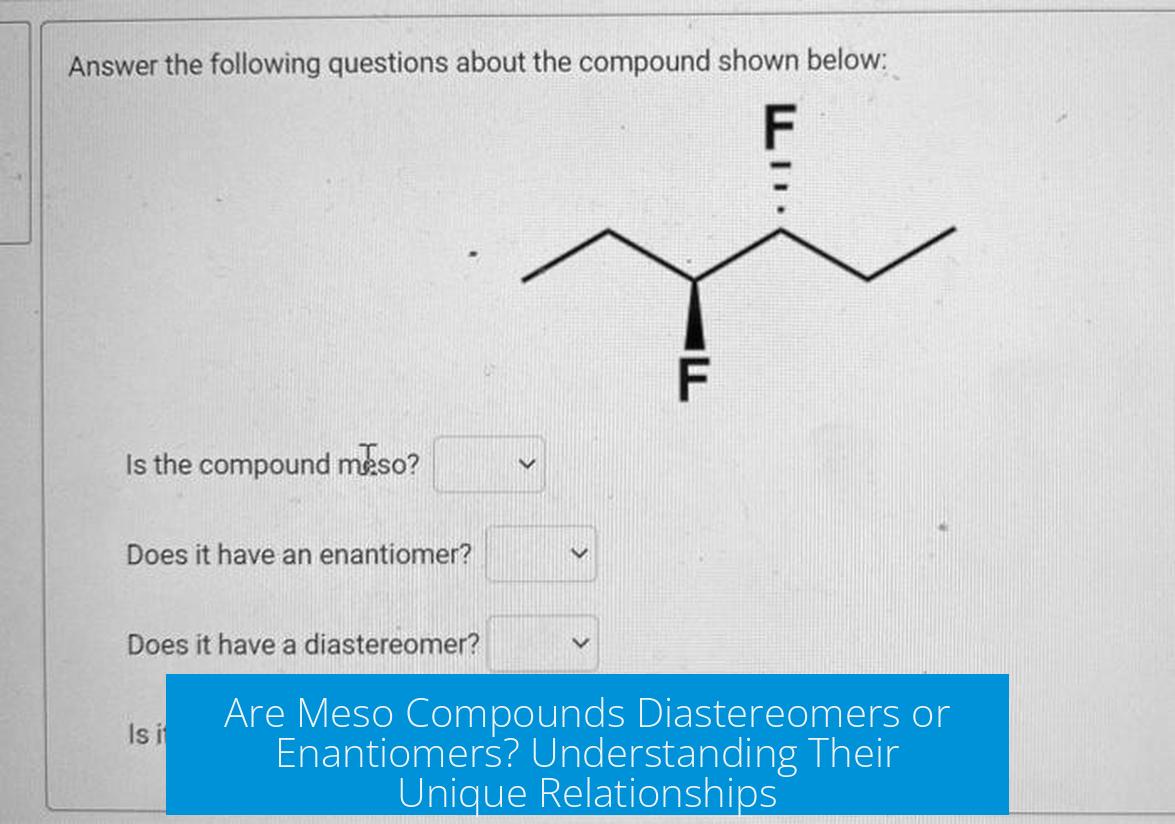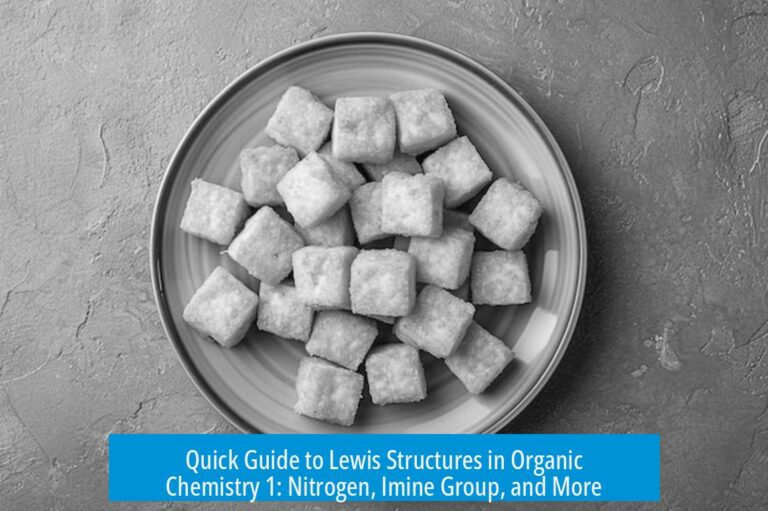Are Meso Compounds Considered Diastereomers or Enantiomers?
Meso compounds are not considered either diastereomers or enantiomers by themselves, as they represent a distinct category of stereoisomer defined by internal symmetry rather than relational comparison.
Meso Compounds as Individual Entities
A meso compound is a single molecule with an internal plane of symmetry. This symmetry makes the molecule achiral despite having stereocenters.
By definition, a meso compound does not have a non-superimposable mirror image. Therefore, it does not possess an enantiomer. Unlike enantiomers or diastereomers, which are defined through comparison with other stereoisomers, the term “meso” describes a property intrinsic to one compound. It is an absolute description, not a relative one.
Enantiomers and Diastereomers Require Comparison
Enantiomers and diastereomers exist only by comparing two distinct stereoisomers.
- Enantiomers: pairs of stereoisomers that are non-superimposable mirror images.
- Diastereomers: stereoisomers that are not mirror images and differ in configuration at one or more stereocenters.
A meso compound on its own has no stereoisomeric counterpart that fulfills these criteria, so it is neither an enantiomer nor a diastereomer of another molecule.
Meso Compounds and Their Diastereomers
While a meso compound itself is not a diastereomer, it can have diastereomers. These diastereomers differ at some stereocenters but lack the internal symmetry that defines the meso form.
For example, a meso-tartaric acid molecule can have diastereomers that are chiral and lack a plane of symmetry.
Pairs of Meso Compounds Can Be Enantiomers
When considering two related meso compounds with opposite configurations at all stereocenters, these compounds form a pair of enantiomers.
This situation arises because each compound is individually meso and achiral, but together they are non-superimposable mirror images.
Thus, the label “meso” applies to each compound independently, while the pair can be enantiomeric.
Key Points to Remember
- Meso is a property of a single compound, indicating internal symmetry and achirality.
- A meso compound alone is neither an enantiomer nor a diastereomer.
- Meso compounds can have diastereomers that lack internal symmetry.
- Pairs of meso compounds with opposite stereochemistry can be enantiomers of each other.
Summary
| Aspect | Explanation |
|---|---|
| Meso Compound | Has an internal plane of symmetry, achiral, no enantiomeric partner by itself. |
| Enantiomer | Non-superimposable mirror image of another stereoisomer (requires pair). |
| Diastereomer | Stereoisomer differing at one or more but not all stereocenters (requires pair). |
| Meso Pair | Two meso compounds with opposite configurations can be enantiomers. |
What is a meso compound in terms of stereochemistry?
A meso compound has an internal plane of symmetry. It exists independently and does not require a comparison to another molecule to define it. Meso is a property, not a relational term like enantiomer or diastereomer.
Are meso compounds considered enantiomers or diastereomers by themselves?
A single meso compound is neither an enantiomer nor a diastereomer. It is its own compound and does not have an enantiomeric partner. Its internal symmetry means it is identical to its mirror image.
Can meso compounds have diastereomers?
Yes, meso compounds can have diastereomers. Diastereomers differ in one or more stereocenters but are not mirror images, so some stereoisomers related to a meso compound may be diastereomers.
When are two meso compounds considered enantiomers?
If two meso compounds have opposite configurations at all asymmetric centers, they can be enantiomers of each other. This applies only when comparing two distinct meso compounds as a pair.
Is “meso” a comparison term like enantiomer or diastereomer?
No, “meso” describes a property of a single compound having internal symmetry. Enantiomer and diastereomer are relational terms between two different stereoisomers.





Leave a Comment